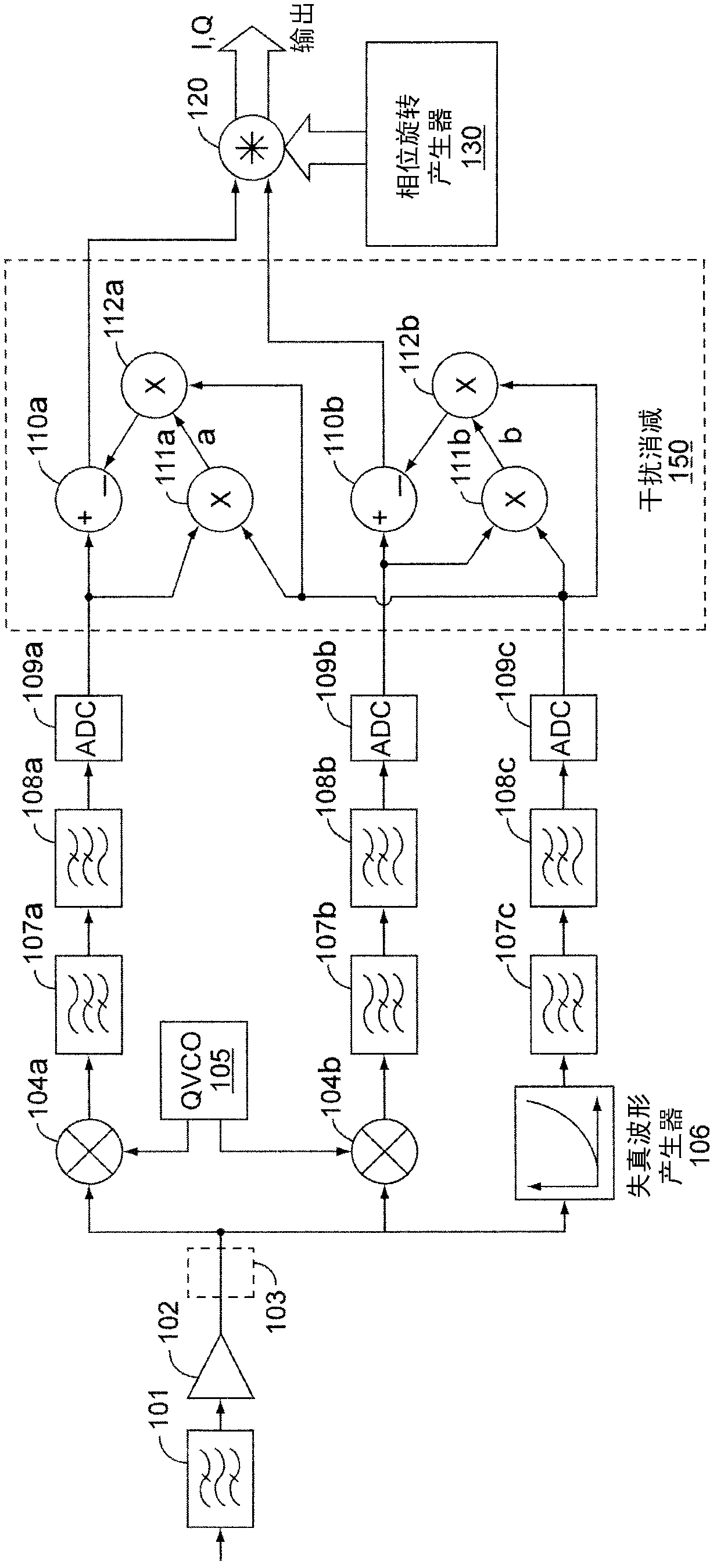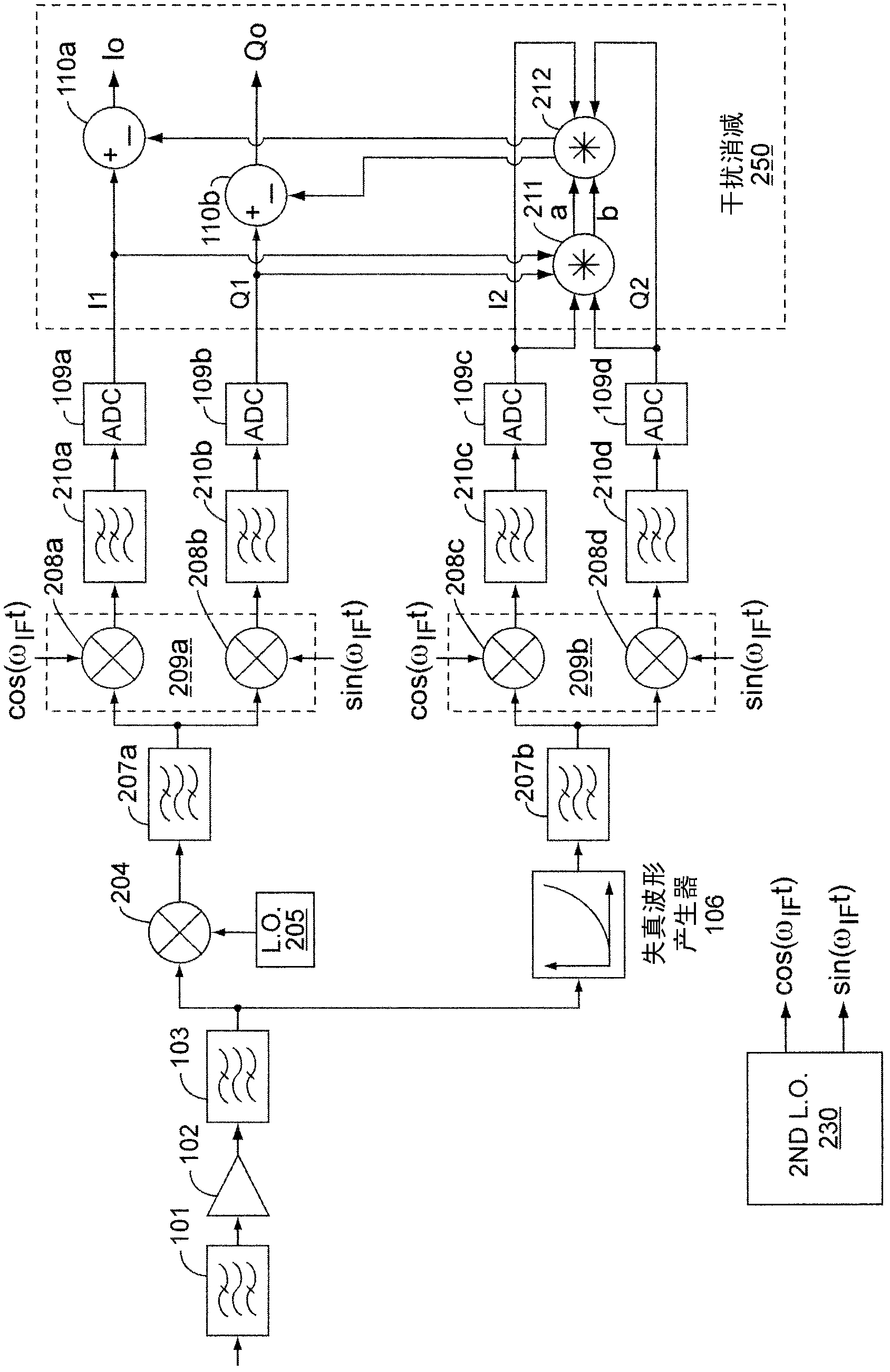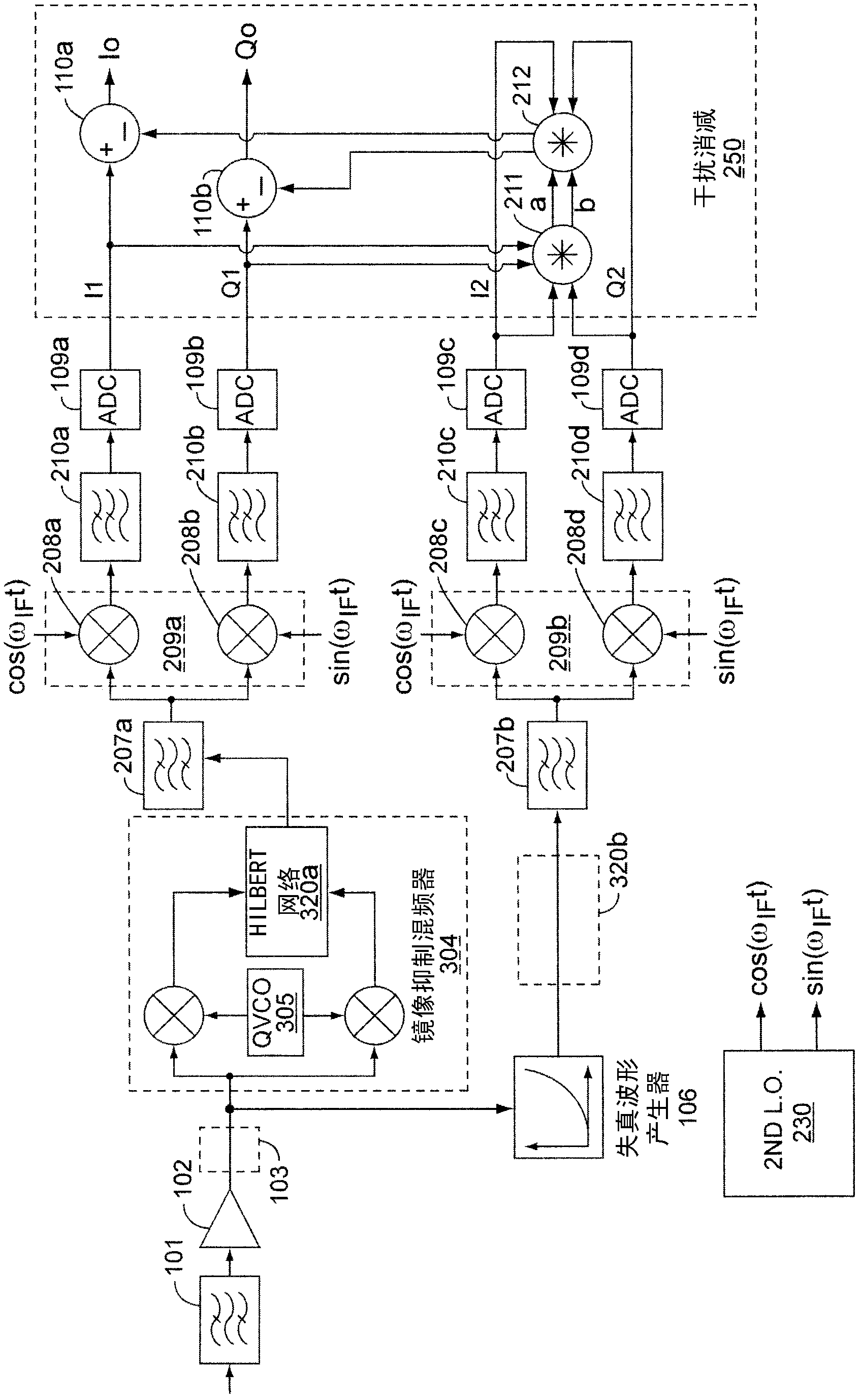Interference cancellation in an OFDM receiver
A receiver, interference signal technology, applied in the field of interference caused by nonlinear distortion, can solve problems such as proportional interference of second-order intermodulation
- Summary
- Abstract
- Description
- Claims
- Application Information
AI Technical Summary
Problems solved by technology
Method used
Image
Examples
Embodiment Construction
[0021] A homodyne or direct conversion receiver can be considered a variant of a traditional superheterodyne receiver. Generally, a superheterodyne receiver receives a signal in a first frequency band and mixes the received signal with a locally generated oscillator signal to convert it to a second or intermediate frequency (IF) band. By choosing the local oscillator frequency a constant amount away from the desired signal in the first frequency band, the desired signal always appears at the same frequency in the IF band, facilitating selection by a fixed tuned IF filter.
[0022] In the homodyne variant, the selected "mid" frequency band is DC or zero frequency. The local oscillator must then be tuned to the center of the desired received signal. At the mixer output, the modulation of the desired signal (typically manifested as spectral components above and below the center frequency of the desired signal) is "folded." Thus, signal components at a frequency offset Δf above ...
PUM
 Login to View More
Login to View More Abstract
Description
Claims
Application Information
 Login to View More
Login to View More - R&D
- Intellectual Property
- Life Sciences
- Materials
- Tech Scout
- Unparalleled Data Quality
- Higher Quality Content
- 60% Fewer Hallucinations
Browse by: Latest US Patents, China's latest patents, Technical Efficacy Thesaurus, Application Domain, Technology Topic, Popular Technical Reports.
© 2025 PatSnap. All rights reserved.Legal|Privacy policy|Modern Slavery Act Transparency Statement|Sitemap|About US| Contact US: help@patsnap.com



